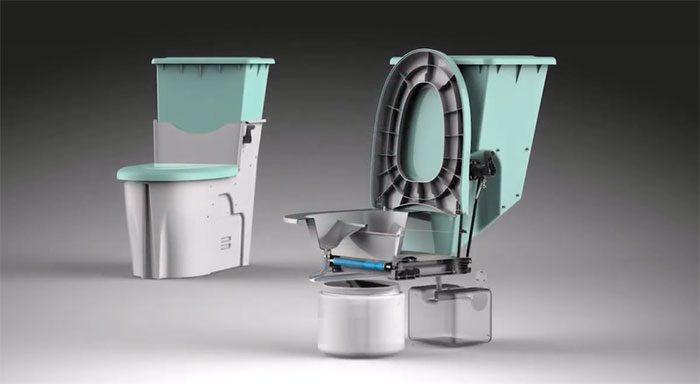The Sandi toilet uses sand and a conveyor belt instead of traditional flushing methods, helping to save water and installation costs.
Archie Read, an architecture student at the University of Dundee (Scotland), has developed a waterless toilet model for low-income areas, such as rural sub-Saharan Africa, Design Boom reported on August 8th.
Read has installed a mechanical flushing system that uses a conveyor belt to transfer waste from the toilet into a storage compartment below. First, users need to fill the upper chamber with sand and pull a lever to allow the sand to flow down. Once the toilet is filled with sand, users can use the toilet and then flush by pulling the lever and waiting for the sand to push the waste down into the storage chamber.
Below, Read has also placed a device that separates solid and liquid waste, allowing users to process feces into a type of fertilizer. The toilet has been successfully tested with mashed potatoes mixed with water, corn, and food coloring. However, Read noted that some details still need to be refined.

Users simply need to attach it to the floor, fill it with waste material, and can start using it.
In the future, Read hopes to sell the Sandi toilet for $72 with no operating costs, as this model does not require complicated installation. Users only need to attach it to the floor, fill it with waste material, and can start using it. The Sandi toilet can store a minimum of 20 liters of solid waste and 30 liters of liquid waste. “A household of seven will need to empty the toilet once every 10 days,” Read stated.
One of the biggest challenges currently is that production costs are still four times higher than the target, Read shared. He plans to collaborate with large organizations to seek funding for the project while also working with engineers and designers to conduct further testing and assembly processes to ensure the quality and feasibility of the Sandi toilet.


















































